Dieter Kiessling
November 21, 2016 – February 19, 2017
Fingers curl around the body of a camera and thrust it toward the viewer. The round black funnel at its center resembles a gaping maw, with a small opening that seems to lead into its interior. What hides inside, and what is this funnel for? Does it want to draw something in from the outside—does it want to claim something from me—or does it want to eject something outward from within—does it want to do something to me? The surroundings offer no clues; they are entirely empty. This emptiness around the machine transfers onto me: I am at its mercy.
Is this camera still an instrument meant to capture something from the world as an image? Or is the machine directed solely at me? Who triggers it? Are it the fingers that seem to grasp the device from out of nowhere—where is the body to which they belong, above all, where is the head? The fingers still appear to belong to a hand, perhaps an arm or shoulder can be sensed, but what comes after that? Have these human limbs become autonomous? Do they exist as an independent clone—or does this unreal confrontation overwhelm me with the idea that the fingers could be my own, as in a nightmare: my limbs have detached themselves from me and now seek to capture an image of me?
Around the fingers and the camera, there is nothing visible except two bands of color: a gray stripe in the lower half and a white one above. Can these be interpreted as spatial indicators? Is the gray the ground and the white the sky—or is it emptiness, or an immaterial wall? How can life exist in such a clinical space? Is it a laboratory for self-reflection—or for self-exposure?
Who is turned toward whom here, and in what way? Am I turned toward myself, am I turned toward the machine, or is the machine turned toward me? And what does it all lead to—do I still control the machine, or does it now control me?
And in what space do I, as the viewer, actually find myself—am I being drawn into this laboratory?
On the lens, we can see that the inscription appears in mirror writing. So the third element alongside the fingers and the camera is a mirror. Mirrors serve to let me look at myself, to assess the state I’m in, how I differ from other possible appearances of myself, and how I must correct or align myself in order to once again approach my ideal self-image. Mirrors are instruments of self-approximation.
But what a paradoxical situation we find here: someone stands opposite a mirror and does not become visible. Only the fingers and the camera—meant to capture the mirrored image of the photographer—appear in the image. As the viewer, I can see this image where the person triggering the photo remains invisible. And I am positioned exactly where the mirror was at the time the photograph was taken.
Am I, as the viewer, interchangeable with the mirror? Mirrors are strange objects: they create images that do not last. Am I, in this exchange with the mirror, just as immaterialized as the mirror image itself?
The mirror is not recognizable as an object—except through the mirror writing—because its edges are not visible. Has it become infinitely extended, and as a consequence, has the world been immaterialized?
Is the camera meant to capture what can be seen in the boundless realm of the mirror? But why does the trigger of the camera—the body behind the gripping fingers—remain invisible?
A camera captures only a single moment and only a fragment of the world. When engaging with a mirror, it captures only its immaterial image. In this reduction of the continuum of time to a moment, of spatial extension to a small segment, and of reality to the immaterial nature of a mirror image, is it conceivable that that which seems to guarantee the wholeness, completeness, and reality of our world—our sensually perceiving, moving, and orienting body—has dissolved? That our body, through its very presence, brings about its own absence?
Or is it the technical apparatus that brings about our erasure? Are the triggering fingers the last remnant of us in a Kafkaesque world, after the world, other people, and reality have withdrawn from us? Dieter Kiessling is a professor of media art and currently serves as the rector of the Mainz Academy of Fine Arts.
Installation Views
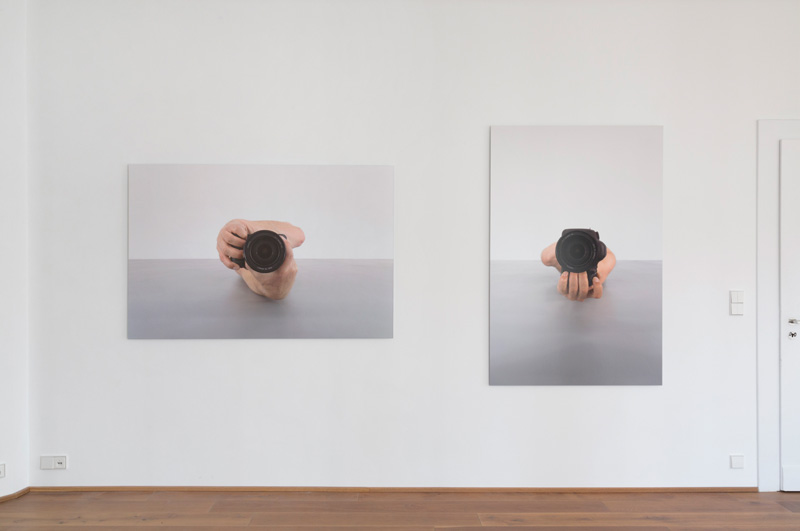
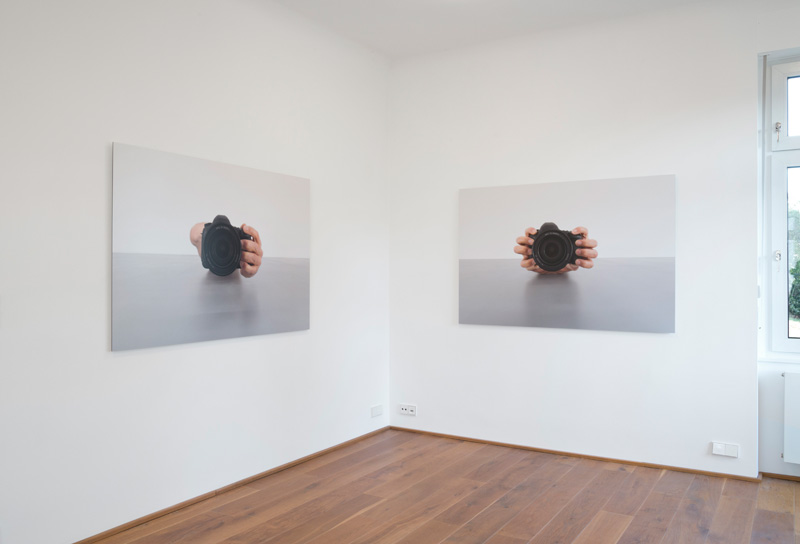
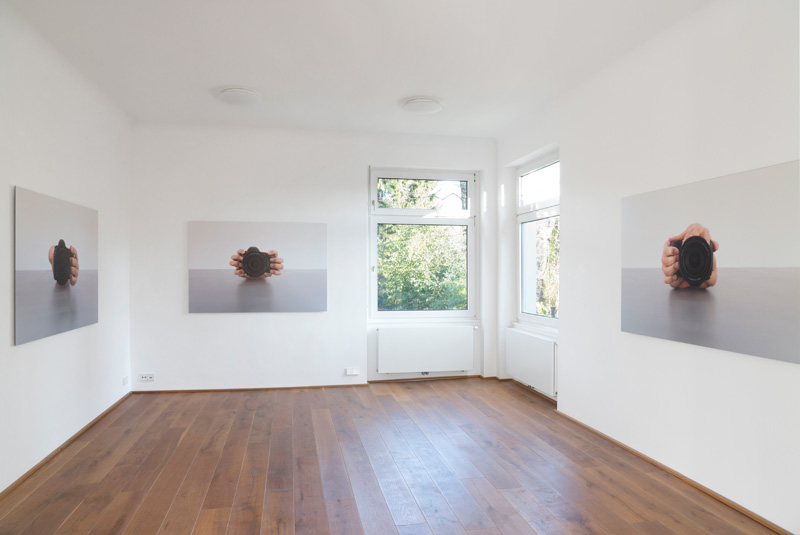
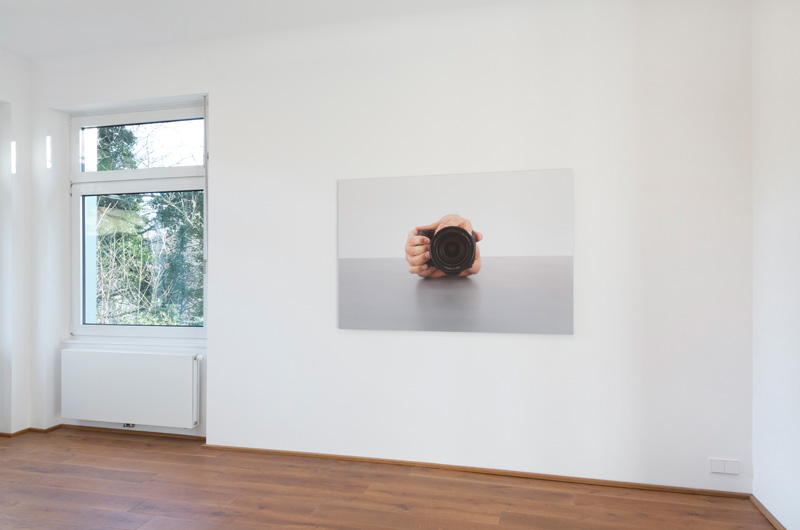

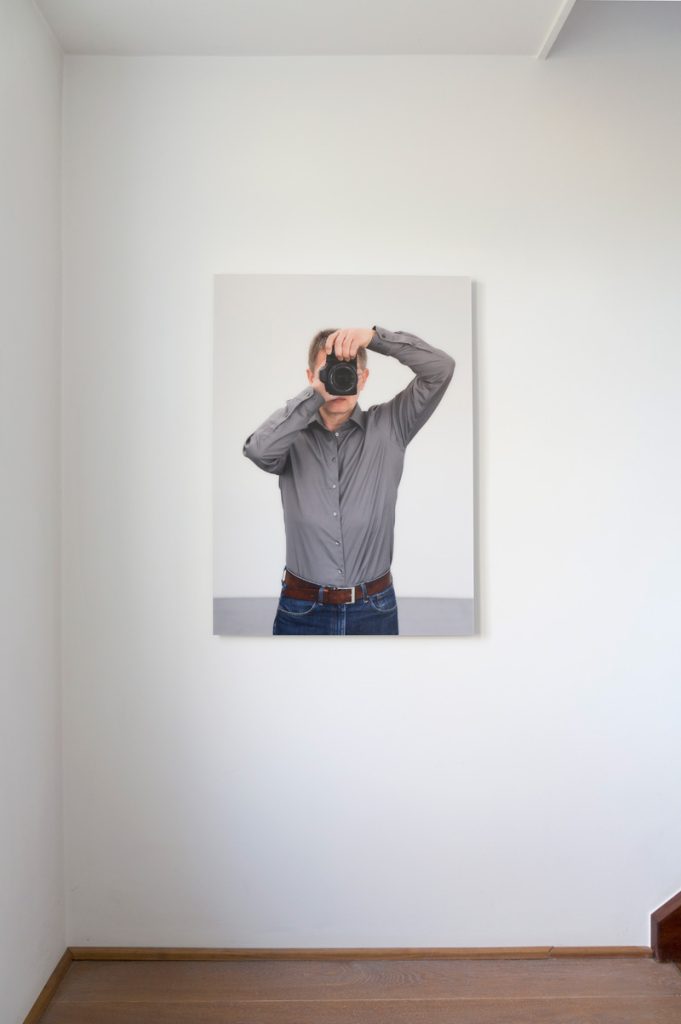
Fotos: Dieter Kiessling
